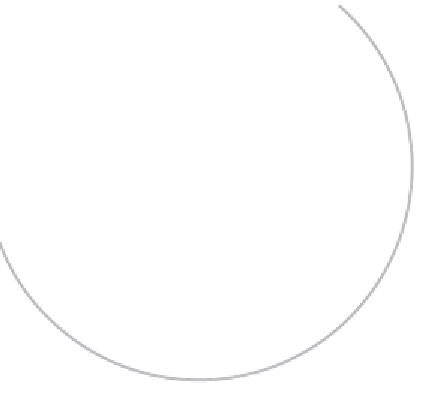Global Positioning System Reference
In-Depth Information
FIGURE 3.21.
Trilateration. (a) Three satellites at
A
,
B
, and
C
transmit a signal that tells
a receiver it is a distance
r
1,2,3
from them. For one satellite, the distance information is
sufficient to show that the receiver lies on a circle centered on the satellite position.
For two satellites, two intersecting circles restrict the receiver to the intersection
points (here, points 1 and 3, if the two receivers are
B
and
C
). For three satellites,
the receiver position is determined unambiguously. (b) In three dimensions, four
satellites are needed for unambiguous positioning of a receiver. With one satellite,
we can place the receiver on the surface of a sphere; with two satellites we can place
it on the circle where two spheres cross (as shown). From (a) you can now see why a
total of four satellites are required.

















